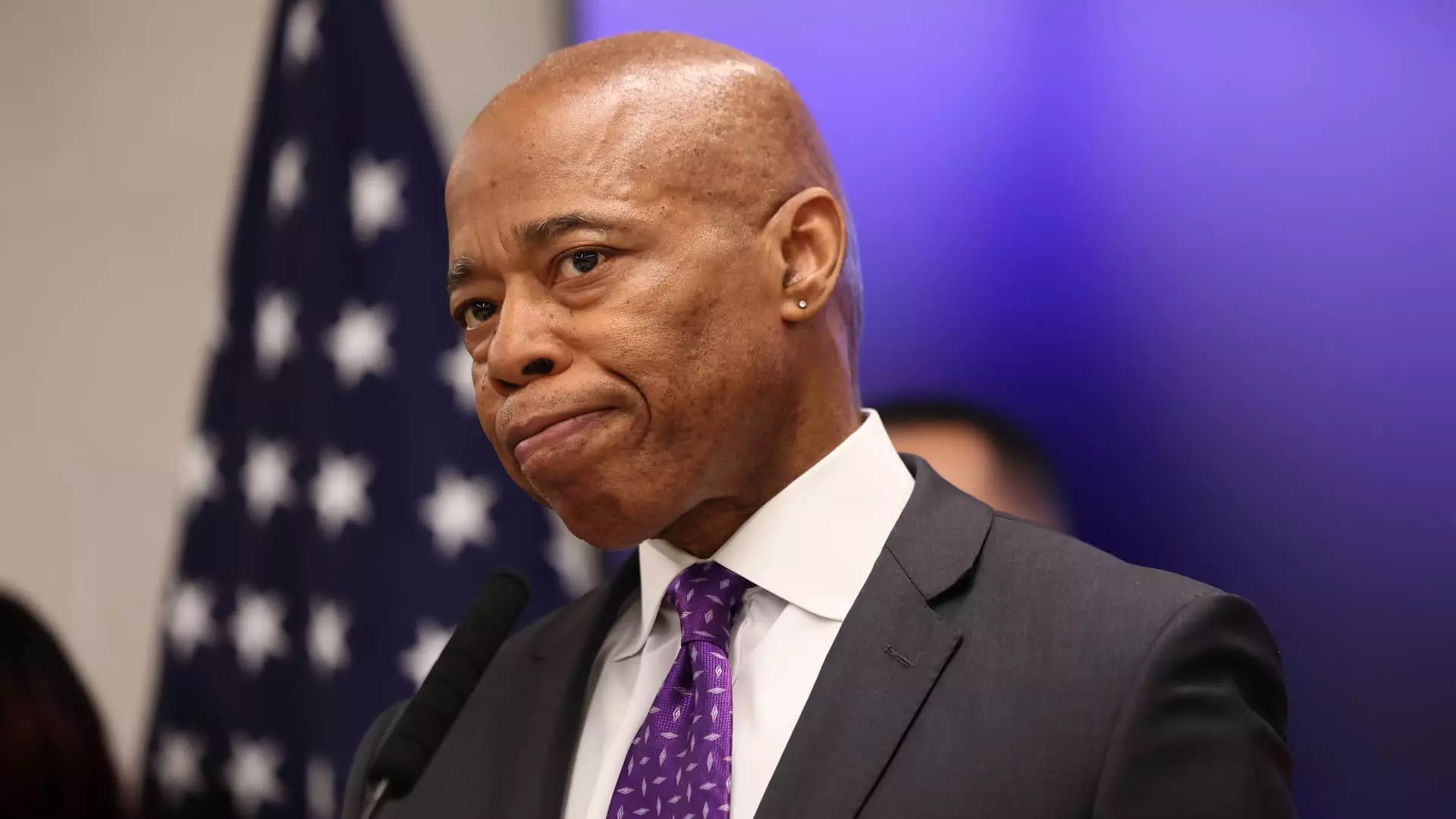In a recent turn of events that has captured the attention of both legal experts and the general public, New York City Mayor Eric Adams finds himself embroiled in a criminal corruption case. Adams’ legal representatives have filed a motion seeking the complete dismissal of the case against him, presenting claims of misconduct on the part of prosecutors. This case, steeped in complexities and allegations, raises significant questions about the intersection of law, politics, and media influence.
At the heart of the mayor’s defense is a leaked communication from Danielle Sassoon, the former acting U.S. Attorney for Manhattan, to Attorney General Pam Bondi. This letter, which surfaced in mid-February, allegedly contains assertions of Adams’ guilt and discusses the potential for new charges against him. Sassoon’s resignation, alongside that of six other federal prosecutors, reportedly occurred due to disagreements with directives issued by the Department of Justice (DOJ) regarding the case. This mass resignation points to a possible schism within the DOJ itself, raising broader concerns about the integrity of the prosecution process.
Sassoon’s letter, as cited by Adams’ attorneys, signals a dangerous precedent where prosecutor opinions are treated as factual assertions. It suggests that Adams’ legal team is not merely questioning the motivations behind the case but also illuminating potential biases that could lead to an unjust legal outcome.
One of the most provocative elements of Sassoon’s letter is the insinuation of a quid pro quo arrangement between Mayor Adams and the DOJ. According to Sassoon, there were discussions surrounding Adams’ alleged agreement to support strict immigration enforcement measures in exchange for a dismissal of the corruption charges. Such inflammatory accusations, as indicated by Adams’ legal team, not only signify a potential manipulation of facts but also highlight the highly charged political atmosphere surrounding the case.
The notion that legal ramifications could be influenced by political maneuvering raises ethical questions about the role of the DOJ in what should be a strictly legal debate. Adams’ lawyers have vehemently denied these propositions, indicating that they are rooted more in speculation than in substantiated fact. The existence of claims that could bolster political narratives rather than factual integrity is alarming for the public trust in legal processes.
As the case unfolds, it remains to be determined whether the presiding Judge, Dale Ho, will agree to dismiss the charges “with prejudice,” as requested by the mayor’s lawyers. A dismissal with prejudice would permanently halt any future attempts by the DOJ to bring similar charges against Adams. Conversely, a dismissal without prejudice leaves the door open for the government to renew their case later, prolonging not only the legal uncertainty for Adams but also the public’s scrutiny of his administration.
The court filings present a narrative aimed at undermining the prosecutor’s integrity, suggesting that the legal battleground has escalated into a public relations war where allegations and insinuations often take center stage. This situation showcases the potential for courtroom battles to become tangled with media narratives, further complicating the pursuit of justice.
As legal proceedings continue, the corruption case against Mayor Eric Adams remains mired in speculation, controversy, and deepening legal ramifications. The implications of this case extend beyond the courtroom, impacting public perception and trust in political figures and their interactions with federal institutions.
The key questions surrounding integrity, accountability, and the influence of political motives in legal proceedings persist. As we await the court’s decisions and the potential consequences for Mayor Adams, it is clear that this case will resonate across the political landscape, shaping discourse about ethics in governance and the justice system for years to come. The dissonance between legal philosophies and political realities stands as a reminder of the intricate dance between law and politics in America’s dynamic judicial environment.

